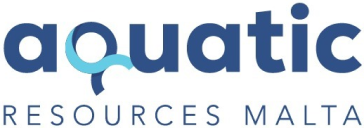EMFAF2.1.1 – Species Diversification for Maltese Aquaculture.
The diminishing capture fisheries stocks, ever increasing population and demand for more food provide an impetus for the development of the aquaculture sector. However, the aquaculture sector must be well-founded to undergo robust growth and sustainable development in the years ahead, and this sustainable development cannot rely completely on intensive farming of few and common aquaculture species.
Maltese aquaculture is a valid economic sector with a growth potential. However, the Closed Cycle Species (CCS) production relies almost exclusively on the farming of two marine species, such as sea bream and sea bass, with an average yearly production of ~2,500 tonnes.
This means that, to foster sustainable aquaculture activities, there is a strong need to add resilience to the sector by diversifying the range of species farmed, in line with the principles of the new EU Strategic Guidelines for a more Sustainable and Competitive Aquaculture which include the species diversification in aquaculture.
To this end, the overall aim of this project is to increase species diversification of Maltese aquaculture industry by introducing pioneering new marine species such as the Greater amberjack (Seriola dumerili) and the Red porgy (Pagrus pagrus) to allow the sector growth to be sustainable, proactive, and competitive.
The objective is the development of species-specific farming protocols for these species, and this will be achieved through the utilisation of SMART technologies and interdisciplinary R&D solutions. In fact, during the project, specific trials will be carried out across different scientific disciplines, such as reproduction, husbandry, nutrition, health, and welfare to overcome the aquaculture production bottlenecks for these species and provide specific solutions.
The expected results will produce standardized hatchery protocols for the selected species. In conjunction with the local aquaculture industry, a shift to commercial scale production may be potentially explored under a complimentary but independent activity, tangibly contributing to the diversification and expansion of the local aquaculture industry.
The protocols emerging from this project can be also replicated anywhere in European coastal areas where local conditions suit the selected species, with production in either dedicated or integrated multi-trophic (IMTA) facilities.
This species diversification project will contribute to fostering sustainable aquaculture activities, and processing and marketing of new aquaculture products, thus contributing to food security in the Union. Eventually, it will give its contribution to decreasing the fishing effort on these socio-economically important species, in coherence with the objectives set by the Common Fisheries Policy.
Moreover, a wide range of dissemination activities are also planned, targeting both aquaculture industry and the consumers to ensure proper dissemination of the results.
Furthermore, the hatchery facility within the Aquatic Resources Malta (ARM) will also serve the function of an aquaculture training facility, to disseminate the knowledge and expertise of the aquatic environment amongst the student community, aiming at promoting and increasing social acceptance of aquaculture and inspire the next generations.
